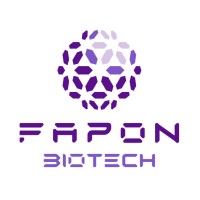New Saliva Test Detects Alcohol Exposure
By LabMedica International staff writers
Posted on 25 Aug 2010
An innovative analytical test is capable of detecting Ethyl Sulfate (EtS) and Ethyl Glucuronide (EtG), produced by the body after alcohol exposure, in a simple saliva sample. Posted on 25 Aug 2010
The Saliva-Alcohol Alco-Screen test is intended for use as a rapid, highly sensitive method to detect the presence of alcohol in saliva to provide an approximation of relative blood alcohol concentration, allowing for greater detection sensitivity than breath testing methods. The simple, one-step, two-minute test requires no instrumentation, calibration, or special training to be used effectively. For applications where a qualitative determination of blood alcohol concentration is required for forensic purposes, liquid chromatography-mass spectrometry-mass spectrometry (LC/MS/MS) technology is used for confirmation of the oral fluid test result.

Image: The Saliva-Alcohol Alco-Screen test (photo courtesy Forensic Laboratories).
Since the relationship between the amount of saliva alcohol and blood alcohol is 1:1, while with breath it is 0.000048:1, saliva serves as a more sensitive testing medium than breath. Another advantage of saliva analysis is ease of collection, since the sample is produced with direct observation that is not gender dependent (such as a urine test), and the oral fluid collector can be easily labeled and secured in a strict chain of custody procedures. Oral fluid samples also provide a good indication of recent drug use, as most drugs are present in the saliva for 2-4 days after use. The Saliva-Alcohol Alco-Screen test is a product of Forensic Laboratories (Denver, CO, USA).
"Our mass spectrometry division was one of the first to offer the quantitation of both EtG and EtS in urine,” said James Ruth, Ph.D., Forensic Laboratories' laboratory director. "Now we are the first to offer EtS in oral fluid.”
Both EtG and EtS are minor but important metabolites of alcohol, because they are more slowly eliminated from the body than alcohol itself and can thus be used to better document and detect alcohol. Both EtG and EtS have similar time spectra; one standard drink, in an average person, can be detectable for about 24 hours (using the lowest cutoffs of 100 ng/ml for EtG and 25 ng/ml for EtS), whereas urine alcohol will disappear following one drink within about 4 to 6 hours; after binge drinking EtG and/or EtS can be detected in urine for several days or more. However, while EtG is degraded in urine when certain bacteria are present (which can cause a false negative test), EtS has not been shown to be degraded by bacteria.
Related Links:
Forensic Laboratories









.jpg)



